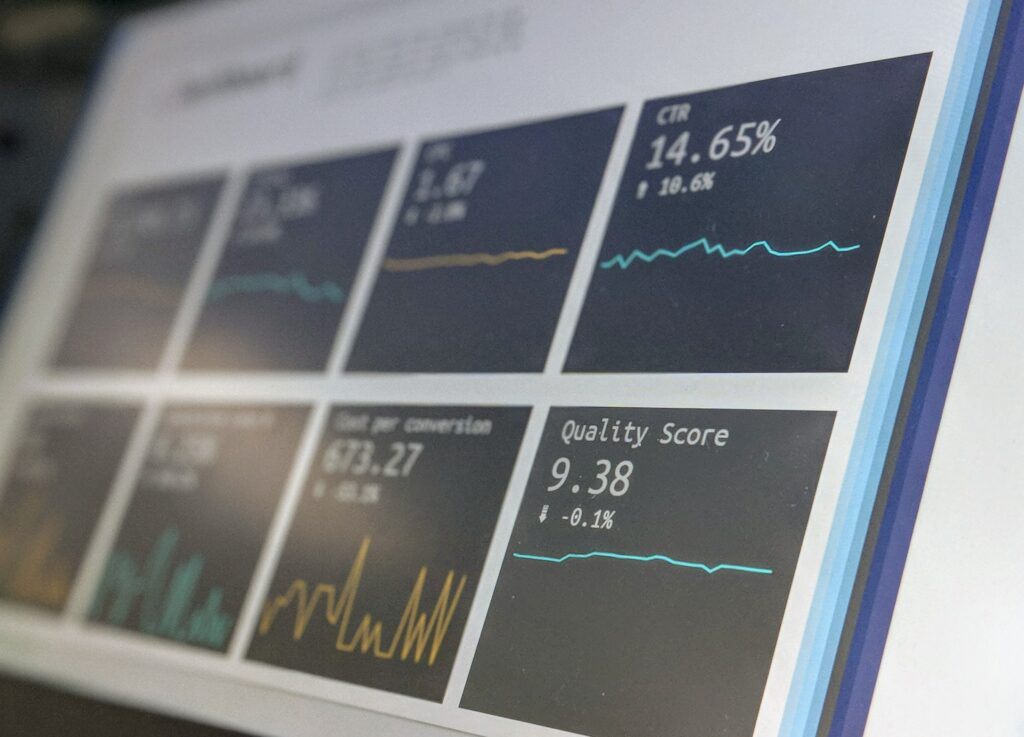When a business experiences financial hardship, marketing budgets are usually the first to get cut. Even with fewer dollars (and resources) at your disposal for b2b data-driven marketing, the expectation to generate revenue remains. Delivering on those expectations is difficult, but not impossible. It takes strong collaboration, creative thinking, and the right tools to move the needle.
If you shift your priorities effectively, you can play an important role in helping your organization overcome its financial challenges.
- Start by collaborating with your team
- Get serious about aligning with sales on pipeline and revenue
- Use contact data to engage prospects who are working remotely
- Use data enrichment on old leads and current customers
- Stay top of mind with thought leadership content
- Partner with a high-quality data vendor
- Evaluate your tech stack for B2B data driven marketing
- Use your marketing budget wisely
- Learn more about Marketing Strategies and Performance:
Start by collaborating with your team
Any sort of crisis – whether an external issue like a pandemic or an internal change, such as losing a major customer – reveals the value of a good team. In the event that your budget is slashed, you need to collectively focus your time and money on the tactics, prospects, and strategies that generate pipeline and revenue.
Each team member can provide input and creative ideas to help shape how you proceed moving forward. They can also contribute ideas that they’ve gleaned from thought leaders, industry associations, and peers.
When you sit down with your team, start by appointing someone who will take an analytical approach to determine what works efficiently with a limited budget. Then, evaluate:
- Which solutions have worked thus far during the pandemic? How can you expand on those ideas?
- Which case studies prove that you can deliver measurable ROI to your customers? How can you find more customers like those?
- Which audiences currently have the potential to yield the most leads and revenue?
- Are there any segments that are risky to pursue right now?
- Which tactics are consistently most effective? Consider effectiveness in terms of generating leads and maintaining brand awareness.
- Which unproven strategies need to be tabled for a future date?
- Has the customer journey changed in any way?
- Which vendor contracts should be terminated, negotiated, or extended?
When you examine tactics, keep in mind that low-cost tactics may not generate as many leads, but you can do more of them. So instead of attending three big events in a year, you may want to shift that budget to step up your email marketing campaigns. Invest in creating content and potentially take on additional resources to create more targeted campaigns. Consider adding segments or purchasing a list of additional prospects to broaden your reach and engage better with your audiences.

Get serious about aligning with sales on pipeline and revenue
Financial hardship or not, it’s always important to actively cultivate alignment between sales and marketing. Because they talk to prospects all the time, they may have some ideas about how to pivot your marketing strategy as well. When marketing budgets are slashed, it’s likely that your colleagues in sales are also facing the same challenges. In the wake of the pandemic, many sales organizations are also dealing with adapting to the growing preference for self-service among buyers.
To be the best partner to sales right now, focus on delivering only high-quality leads:
- Work together to define your ideal buyer and the criteria you need to identify those individuals.
- Sync up on automation. Make sure both teams are clear on how leads move through your systems and ensure sales can quickly access lead data.
- Provide the most accurate, complete data possible. When a salesperson has a complete, error-free profile of the buyer, they can focus on personalizing the message instead of researching their contact information or making phone calls to the wrong number.
It’s always a good time for sales and marketing to align. But when you’re under the pressures of budget cuts, it’s critical for both teams to work in lockstep. Without alignment, sales may create a “shadow marketing department,” where they buy their own data and create their own cadences. That leads to duplicative efforts and tension between teams. Conversely, when sales and marketing work together successfully, you can generate the revenue needed to ultimately restore your budget and have a real impact on the company’s bottom line.
Use contact data to engage prospects who are working remotely
While it remains to be seen how long remote working arrangements will stay in place after the pandemic has subsided, large tech companies like Google and Microsoft adopting long-term remote work strategies, even if part-time, the traditional means of engaging with prospects may no longer be effective.
According to McKinsey, 70-80% of B2B buyers now prefer to engage with sellers via digital interactions and self-service. The flexibility of scheduling, savings on travel expenses, and safety are the primary drivers behind their preferences. Safety concerns will eventually abate, but it’s likely that the cost savings and flexibility will be permanent.
So how can you adapt to this challenge without blowing up your budget? With rich, high-quality data. As you host digital events – whether they be virtual wine tastings or webinars – you need to do multi-channel outreach. The best B2B data providers provide the full range of contact data you need to execute those plans.
Use data enrichment on old leads and current customers
Do you have old leads in your database that you aren’t sure what to do with? Before tossing them out (or dumping them into a campaign), build out their profile with data enrichment. DealSignal worked with a client who had 5,000 leads they were planning to throw away. Instead, they chose to enrich those leads to identify which ones were still active, and whether they fit their ideal client profile. As a result, they found that they had already had a significant number of viable leads, right there in their database.
Data enrichment can also help you build loyalty and upsell with your existing customer base. Enriching your customer data with firmographics and technographics gives you insight into the company’s financial performance, organizational changes, and the systems they use.
With this information, you can break them into segments and target them with messaging and offers that will resonate. If you already have a regular customer newsletter, consider making multiple versions for different segments. Or instead of offering traditional webinars, host roundtables where customers can network with each other and share best practices.
Whether you’re upselling additional services or just deepening engagement to maintain customer loyalty, focusing on your current customers can increase lifetime value and lower the cost of acquisition.
Stay top of mind with thought leadership content
Even if your operation is lean, it’s important to have a balanced strategy. Too much focus on the bottom of the funnel can dry up your lead pipeline. Fortunately, staying top of mind can be cost-effective. You have the knowledge in-house to create authority-building thought leadership content. At this stage, it’s about finding creative ways to develop content that will resonate with your audiences.
And you don’t have to create the same old white papers and eBooks. Budget-friendly interactive tools offer an alternative to your typical text-based content. Useful tools like spreadsheets and calculators solve customer problems and demonstrate that you understand their pain points. Quizzes can be a fun break from the day-to-day grind while also offering educational insights or helping with decision-making.
Repurposing content is another simple way to produce content cost-effectively, and it’s often overlooked. Extend the life of a white paper by breaking it up into blogs or slide decks. Take a look at your current content and identify which pieces can be repurposed for different audiences by making small tweaks.
With thought leadership, creation is only half the battle. Distribution ensures that your efforts are worth it. In the event of a budget cut, you may not have the same ad budget as you did in the past, and it may make more sense for you to devote those dollars to bottom-of-funnel activities. That’s where social media and email marketing can be so valuable.
As leads come in, consider enriching them with data to determine whether they fit your ideal client profile. It’ll enable you to focus on your most likely buyers and ease the handoff to sales in the event they become a sales-qualified lead.
Partner with a high-quality data vendor
The quality of your data can have an impact on every part of your strategy. Determining where to invest your money when your budget has been cut can be a nerve-wracking decision. But if your team is leaner and you’re looking for ways to cut costs, investing in high-quality data offers a solution.
Look for data vendors that can provide you with assurances about the quality of their data and align well with your processes. The ideal vendor will be able to easily integrate with your systems. Manual data entry can be resource-intensive and lead to errors. Resources are too limited and the pressures are too intense to take that risk.
Another factor to consider is how well a data vendor can help you identify your ideal buyer. You know the attributes that make an organization or individual your ideal prospect. The best vendor can take that information and provide you with leads who meet that criteria. Armed with that data, you can improve the effectiveness of your ABM strategies by spending more time on the prospects that will yield the best results.
Last but not least, look for vendors who can provide up-to-date, verified data. If you receive a list with incorrect names or outdated titles, that information is of no use. And with a limited budget, you don’t have that type of wiggle room. Make the most of your investment by looking for vendors who verify data at the time you request it. Turnover and organizational change occur rapidly, and using the most up-to-date data is the only way to stay ahead.

Evaluate your tech stack for B2B data driven marketing
If all of your other efforts fall flat, start evaluating ways to trim the fat in your martech stack. When you’ve got the right systems, teams work more cohesively. Automations run without issue. You can easily retrieve data for reporting. On the other hand, the wrong systems can slow you down, cause you to send the wrong messages to the wrong people, and make reporting challenging and error-prone.
Evaluate which ones are working for you and which ones aren’t. Examine your systems in terms of productivity and how well they help you meet key performance indicators. Get rid of shiny objects that seem cool, but haven’t been proven as worthy investments.
Many marketers struggle to prove the value of martech to the larger organization. That pressure increases when budgets are cut. Part of the issue is education. As marketers, we understand how valuable it is to have tools that automate time-consuming tasks or allow us to track prospects as they move through the customer journey.
On the other hand, we should be proactively measuring the effectiveness of our tech stack on a consistent basis. If you don’t already, set a regular cadence for determining how many leads you generate from each component of your tech stack. As contracts come up for renewal, you’ll have the data you need to make an informed decision on how you want to handle those vendors.
Once you know which tools you plan to keep, work with a data vendor to clean up outdated or incorrect information, especially if your CRM charges per entry. Even in the best of times, no one should be overpaying for leads that don’t exist or throttling email deliverability due to outdated data.
With many teams working remotely, and some doing so permanently, you’ll be even more reliant on your tech stack to coordinate with each other. Remote workers and distributed teams collaborate more effectively when they can rely on a single source of truth. A clean database allows all teams to align seamlessly and prevent hiccups and slowdowns in your handoffs and automation.
Budget cuts don’t last forever. The lessons you learn when you’re under pressure can serve you for years to come. By connecting with your team and being judicious about which tools and tactics you focus on, you can ride through the crisis and make the case for additional marketing budgets in the future.
Use your marketing budget wisely
In the case of marketing budget cuts, businesses must find ways to navigate through challenging economic conditions and maximize their resources. Here are some strategies to consider:
- Focus on ROI: With limited budgets, it’s crucial to invest in marketing strategies that provide a solid return on investment. Analyze your marketing channels and campaigns to identify those that are most effective in generating leads, conversions, and revenue.
- Be creative: During a recession, consumers are often more price-conscious. Get creative with your marketing efforts to stand out and offer value. Explore innovative ways to market your products or services, such as partnering with other businesses, launching limited-time promotions, or creating unique bundles.
- Focus on existing customers: Your loyal customer base is an invaluable asset during tough economic times. Prioritize customer retention strategies, such as personalized communications, loyalty programs, and exceptional customer service. Building strong relationships with existing customers can help sustain your business during a recession.
- Cost cutting: Look for opportunities to cut costs in your marketing budget without compromising quality. Evaluate your expenses and identify areas where you can reduce spending. This might involve renegotiating vendor contracts, streamlining processes, or reallocating resources to more cost-effective channels.
- Generate additional revenue: Explore ways to diversify your product offerings or find new revenue streams. Consider whether there are complementary products or services you can offer to your existing customer base. Additionally, explore potential partnerships or collaborations that can expand your reach and customer base.
It’s important to note that the strategies mentioned above are general guidelines, and their effectiveness may vary based on the specific industry, target market, and business circumstances. Adapting to a recession requires a deep understanding of your customers, market dynamics, and the ability to quickly respond to changing conditions. Continuous monitoring, data analysis, and flexibility will be essential in managing your marketing efforts during economic downturns.

Do you have questions about B2B data vendors? This free guide will help you.
Learn more about Marketing Strategies and Performance:
- How Data Accuracy Impacts Sales and Marketing Performance and Costs
- Marketing Play: 5 Strategies to Execute Before the Clock Runs Out
- Sales and Marketing Alignment: Best Practices to Drive Revenue
- B2B Data: Using Quality Data for Better Sales & Marketing Performance
- Intent Data: How to Generate Quality Sales and Marketing Leads
- B2B Marketing Trends to Master in 2024
- Insights and Breakdown of B2B Marketing Budget Allocation




